Audi to release PHEV versions of A6, A7, A8 and Q5
At the Geneva Motor Show, Audi will present PHEV variants of the A6, A7 Sportback, A8 and Q5 models, all with a minimum electric range of 40 kilometres (WLTP). The new plug-in hybrids will be available for ordering throughout 2019.
After an order stop for the Audi A3 e-tron and Q7 e-tron last year, four PHEV models are now returning to the Ingolstadt-based portfolio. Depending on the model series, there is a choice between two variants with different performance and features.
First of all, the designation “e-tron” will be reserved exclusively for the fully electric models. With immediate effect, the part-time electric vehicles aka plug-in hybrids will be labelled “TFSI e”. And while the Q7 e-tron was still offered with a diesel engine, the vehicle was taken entirely out of the plug-in hybrid range.
All PHEVs use a TFSI, which is a turbocharged gasoline engine with direct injection, that works together with an electric motor integrated into the transmission.
The A6, A7 and Q5 share the same powertrain. All three models are available in two power levels, that is as 50 TFSI e with 220 kW or as 55 TFSI e with 270 kW. The torque is 450 or 500 Nm respectively.
The Audi A8 L TFSI e, on the other hand, is only available in one version. Its system output is 330 kW. Thanks to recuperation, the electric machine can recover up to 80 kW of energy. It shares a load of braking with the hydraulic wheel brakes, which take over the job once a deceleration of 0.4 g is reached. This way, the hydraulic wheel brakes can recover said 80 kW of energy (max.).
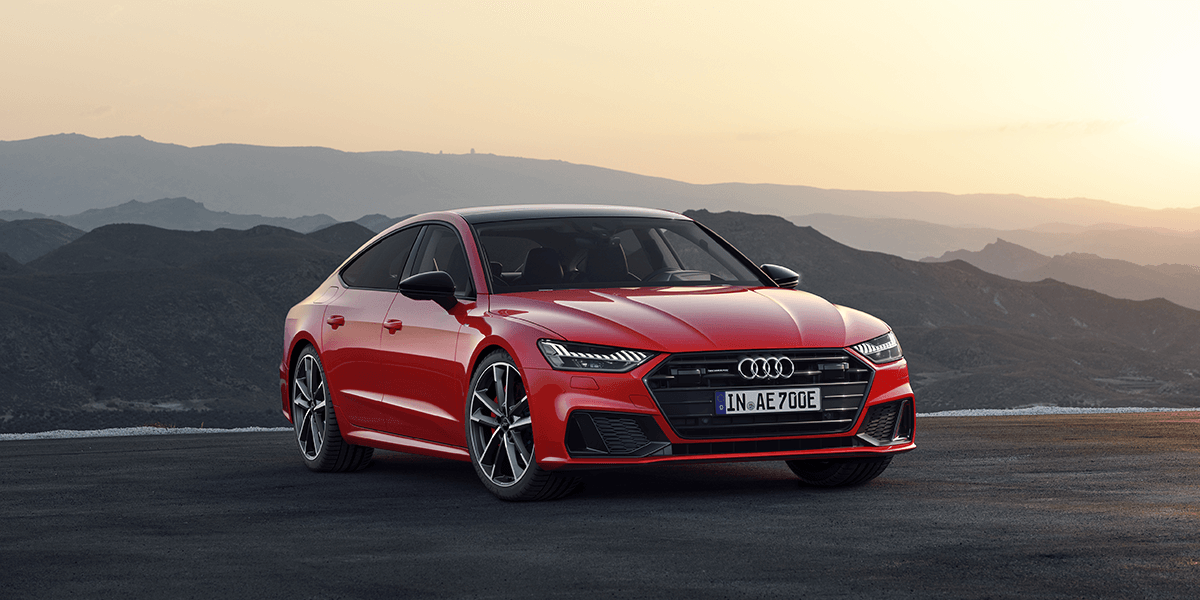
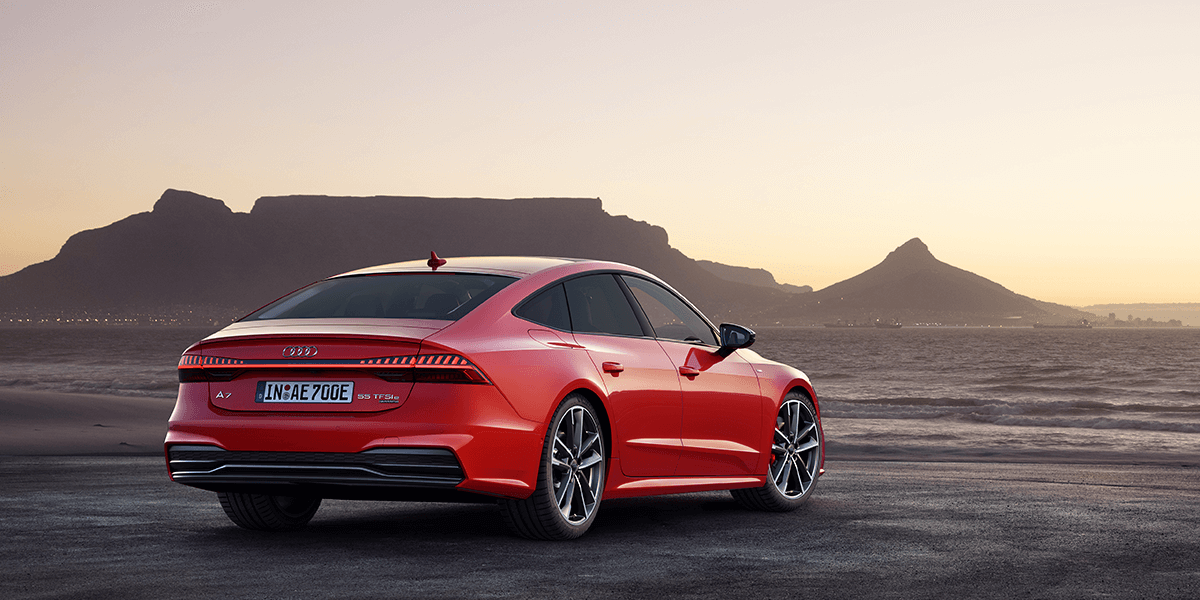
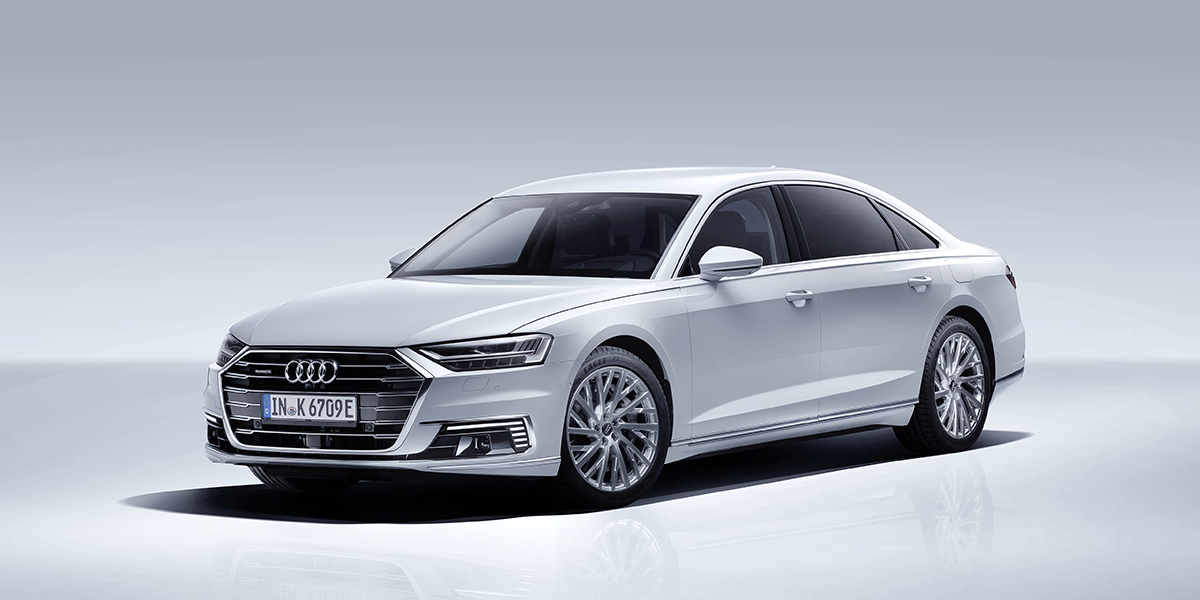
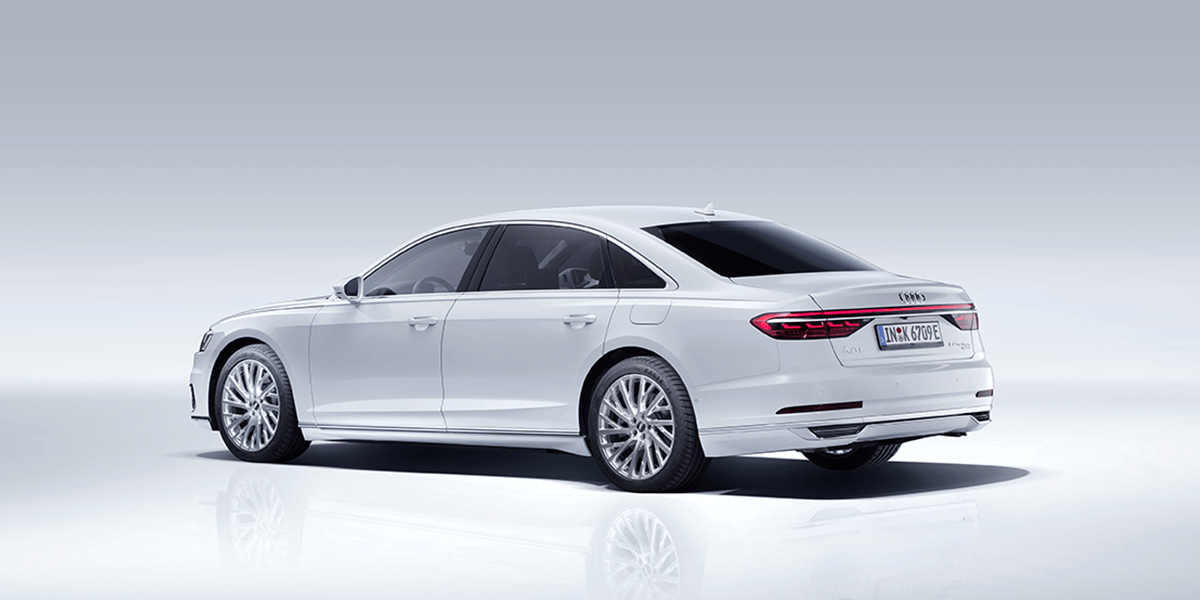
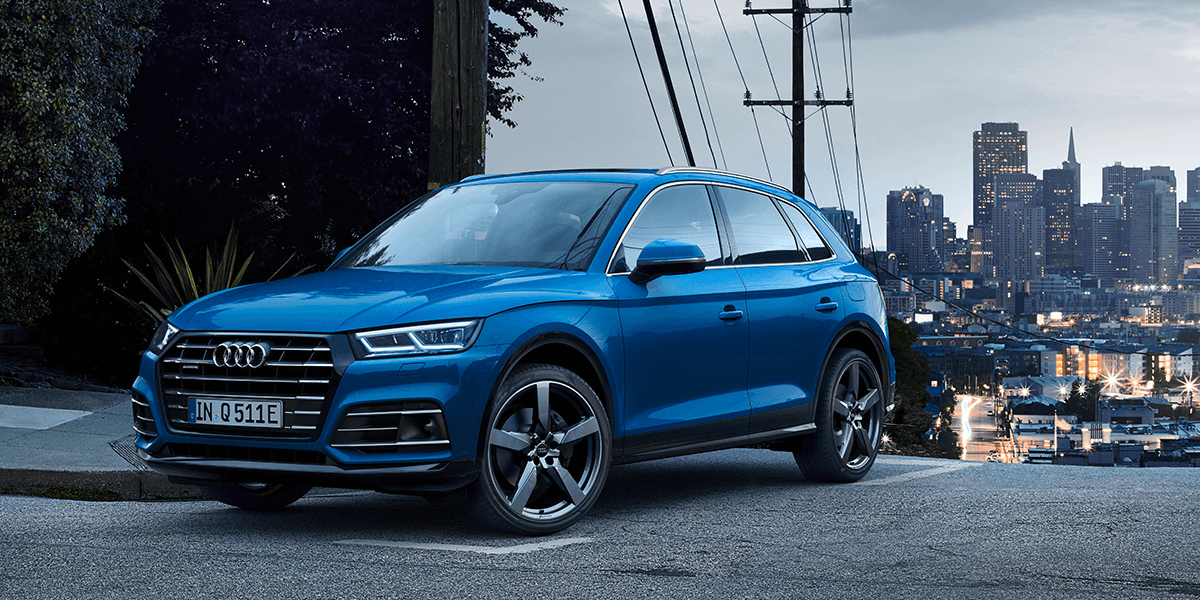
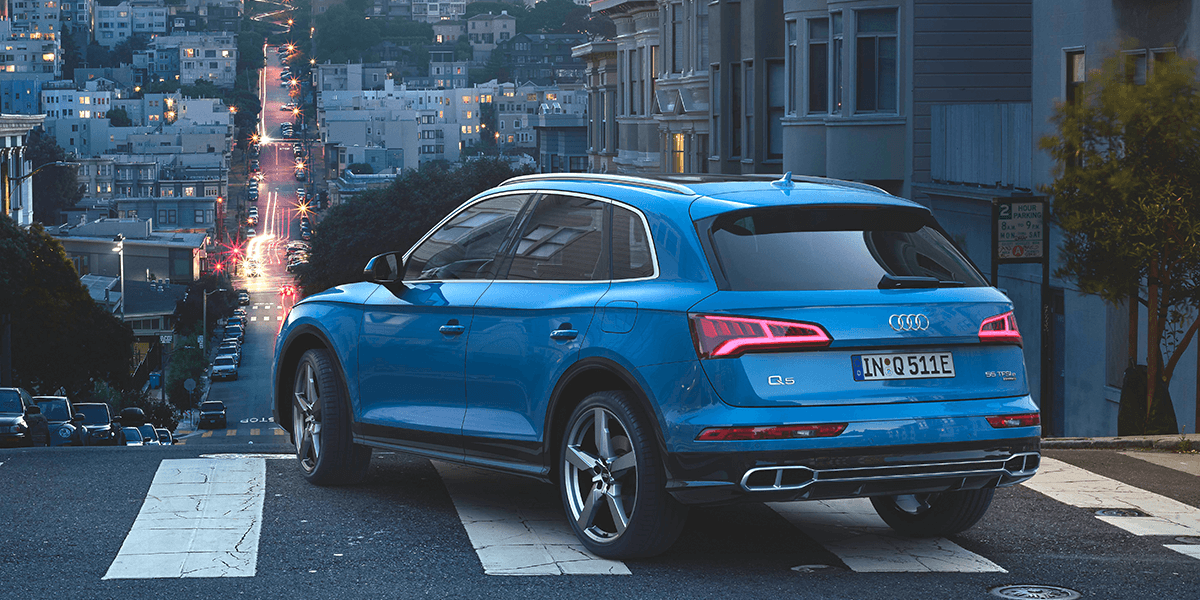
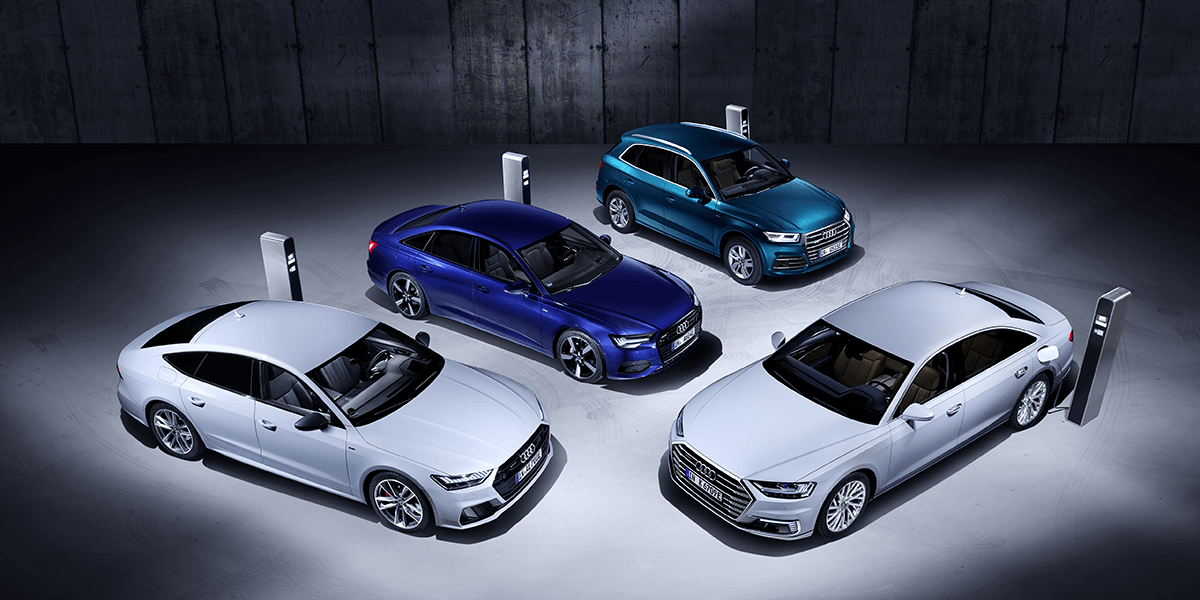
All four plug-in hybrid models by Audi achieve a purely electric range of at least 40 kilometres in the WLTP cycle. This is ensured by the 14.1 kWh lithium-ion battery housed in the luggage compartment floor. In the A6, A7 and A8, this battery consists of 104 pouch cells distributed over eight modules. The battery from the Q5, on the other hand, is packed with prismatic cells. The cooling circuit of the battery is integrated into the low-temperature circuit, which supplies the electric machine and the power electronics. The standard heat pump provides air conditioning for the vehicle and can generate up to 3 kW of heat output from 1 kW of electrical energy with the waste heat generated in the car.
The chemical storage tanks can be charged with an AC charging capacity of up to 7.2 kW. They are fully recharged within a good two hours. The standard equipment of the new plug-in hybrids also includes the compact charging system. It includes cables for household and industrial sockets and a control panel. The type 2 charging cable for charging at public charging points is optionally available. The myAudi app also allows vehicles to be monitored and controlled remotely. For example, customers can start the charging process, program charging timers, receive information about the completed charging process, start pre-air conditioning or even view charging and consumption statistics.
As a standard operating procedure, the engine is started electrically in “EV” mode, and the combustion engine is switched on according to the situation. The plug-in hybrids have the driving modes “EV”, “Auto” and “Hold”. By the way, while other manufacturers sometimes provide an additional mode for charging the battery via the combustion engine, Audi does not.
The predictive efficiency assistant is intended to make a significant contribution to increasing the electric range. To this end, the drive management system integrates the route profile into the powertrain control system and evaluates both the navigation data with active destination guidance and the information from the efficiency assistant and the vehicle sensors. From this, it generates a rough plan for the entire route and a detailed plan for the kilometres ahead. The system thus notifies the driver to take his foot off the gas at times by sending a visual message on the display and haptic feedback from the active accelerator pedal. At the same time, the PHEV initiates proactive recuperation.
The Audi A6, A7, A8 and Q5 will become available as plug-in hybrid versions this year 2019. The Ingolstadt-based company has not yet quoted any prices. Those wanting to buy one of the plug-in hybrid vehicles will receive support from Audi on request in finding a service provider to install a charging connection in their garage.
Meanwhile, there is also news about the Audi Q7 and A3 as plug-in hybrids. In the fourth quarter of 2019, the Q7 will be back in the portfolio with a facelift. The Audi A3, on the other hand, is expected to return in the second quarter of this year after successful WLTP certification. The next generation of the A3 will then come at the beginning of 2020. The PHEV will then have a battery that has grown to 13 kWh. The same also applies to the Golf GTE, which has not been on order since spring 2018. The VW Passat GTE, on the other hand, is back in the programme.
Source: Press release, auto-motor-und-sport.de (A3 and Q7 in German)

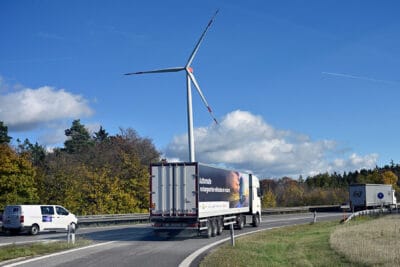


1 Comment